Hydrogel dressings for venous leg ulcers
- PMID: 35930364
- PMCID: PMC9354941
- DOI: 10.1002/14651858.CD010738.pub2
Hydrogel dressings for venous leg ulcers
Abstract
Background: Venous leg ulcers are a chronic health problem that cause considerable economic impact and affect quality of life for those who have them. Primary wound contact dressings are usually applied to ulcers beneath compression therapy to aid healing, promote comfort and control exudate. There are numerous dressing products available for venous leg ulcers and hydrogel is often prescribed for this condition; however, the evidence base to guide dressing choice is sparse.
Objectives: To assess the effects of hydrogel wound dressings on the healing of venous leg ulcers in any care setting.
Search methods: In May 2021, we searched the Cochrane Wounds Specialised Register, CENTRAL, Ovid MEDLINE, Ovid Embase and EBSCO CINAHL Plus. We also searched clinical trials registries for ongoing and unpublished studies, and scanned reference lists of relevant included studies, reviews, meta-analyses and health technology reports to identify additional studies. There were no restrictions with respect to language, date of publication or study setting.
Selection criteria: We included randomised controlled trials (RCTs), either published or unpublished, that compared the effects of hydrogel dressing with other dressings on the healing of venous leg ulcers. We excluded trials evaluating hydrogel dressings impregnated with antimicrobial, antiseptic or analgesic agents as these interventions are evaluated in other Cochrane Reviews.
Data collection and analysis: We used standard methodological procedures expected by Cochrane. We assessed the certainty of the evidence using the GRADE approach.
Main results: We included four RCTs (10 articles) in a qualitative analysis. Overall, 272 participants were randomised, in sample sizes ranging from 20 to 156 participants. The mean age of the included population in the trials ranged from 55 to 68 years, 37% were women based on studies that reported the sex of participants. The studies compared hydrogel dressings with the following: gauze and saline, alginate dressing, manuka honey and hydrocolloid. Two studies were multicentre and the others were single-centre trials. Length of treatment using hydrogel dressing was four weeks in three studies and two weeks in one study. The follow-up period was the same as the duration of treatment in three studies and in one study the follow-up for wound healing was at 12 weeks after four weeks of treatment. Overall risk of bias was high for all trials because at least one of the three key criteria (selection bias, detection bias and attrition bias) was at high risk. Hydrogel compared with gauze and saline It is uncertain whether there is a difference in complete wound healing (risk ratio (RR) 5.33, 95% confidence interval (CI) 1.73 to 16.42; 1 trial, 60 participants) or change in ulcer size (mean difference (MD) -1.50, 95% CI -1.86 to -1.14; 1 trial, 60 participants) between interventions because the certainty of the evidence is very low. Data reported from one trial were incomplete for time-to-ulcer healing. Hydrogel compared with alginate dressing It is uncertain whether there is a difference in change in ulcer size between hydrogel and alginate gel because the certainty of the evidence is very low (MD -41.80, 95% CI -63.95 to -19.65; 1 trial, 20 participants). Hydrogel compared with manuka honey It is uncertain whether there is a difference in complete wound healing (RR 0.75, 95% CI 0.46 to 1.21; 1 trial, 108 participants) or incidence of wound infection (RR 2.00, 95% CI 0.81 to 4.94; 1 trial, 108 participants) between interventions because the certainty of the evidence is very low. Hydrogel compared with hydrocolloid One study (84 participants) reported on change in ulcer size between hydrogel and hydrocolloid; however, further analysis was not possible because authors did not report standard errors or any other measurement of variance of a set of data from the means. Therefore, it is also uncertain whether there is a difference in change in ulcer size between hydrogel and hydrocolloid because the certainty of the evidence is very low. No studies provided evidence for the outcomes: recurrence of ulcer, health-related quality of life, pain and costs. Overall, independent of the comparison, the certainty of evidence is very low and downgraded twice due to risk of bias and once or twice due to imprecision for all comparisons and outcomes.
Authors' conclusions: There is inconclusive evidence to determine the effectiveness of hydrogel dressings compared with gauze and saline, alginate dressing, manuka honey or hydrocolloid on venous leg ulcer healing. Practitioners may, therefore, consider other characteristics such as costs and symptom management when choosing between dressings. Any future studies assessing the effects of hydrogel on venous wound healing should consider using all the steps from CONSORT, and consider key points such as appropriate sample size with the power to detect expected differences, appropriate outcomes (such as time-to-event analysis) and adverse effects. If time-to-event analysis is not used, at least a longer follow-up (e.g. 12 weeks and above) should be adopted. Future studies should also address important outcomes that the studies we included did not investigate, such as health-related quality of life, pain and wound recurrence.
Copyright © 2022 The Cochrane Collaboration. Published by John Wiley & Sons, Ltd.
Conflict of interest statement
CR: research was supported by funding from Brazilian Ministry of Science and Technology/Ministry of Health and the Brazilian National Council of Scientific and Technological Development (Grant 559416/2009‐1).
FD: research was supported by funding from Brazilian Ministry of Science and Technology/Ministry of Health and the Brazilian National Council of Scientific and Technological Development (Grant 559416/2009‐1).
GF: research was supported by funding from Brazilian Ministry of Science and Technology/Ministry of Health and the Brazilian National Council of Scientific and Technological Development (Grant 559416/2009‐1).
Figures
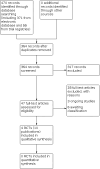

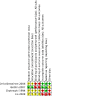
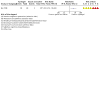
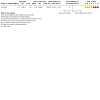

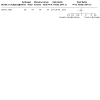
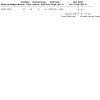
Update of
- doi: 10.1002/14651858.CD010738
References
References to studies included in this review
De la Brassinne 2006 {published data only}
-
- De la Brassinne M, Thirion L, Horvat LI. A novel method of comparing the healing properties of two hydrogels in chronic leg ulcers. Journal of the European Academy of Dermatology and Venereology 2006;20(2):131-5. - PubMed
Gethin 2007 {published data only}
-
- Gethin G, Cowman S. Manuka honey versus hydrogel to deslough venous leg ulcers: a randomised controlled trial. In: 17th Conference of the European Wound Management Association; 2007 May 2-4; Glasgow (UK). 2007:29.
-
- Gethin G, Cowman S. Manuka honey versus hydrogel to deslough venous leg ulcers: a randomised controlled trial. In: Third Congress of the World Union of Wound Healing Societies Meeting; 2008 Jun 4-8; Toronto (Canada). 2008:4.
Grotewohl 1994 {published data only}
-
- Grotewohl JH. The phase-oriented wound dressings of ulcus cruris venosum: experience with the use of new hydrogel Opragel. Zeitschrift fur Allgemeinmedizin 1994;70(9):351-4.
He 2008 {published data only}
-
- He Q, Wu G, Yu B, Zhang T, Wang W, Gu Q. A prospective study on wound-healing hydrogel in treating chronic venous ulcer of lower extremities. Chinese Journal of Reparative and Reconstructive Surgery 2008;22(3):311-3. [PMID: ] - PubMed
References to studies excluded from this review
Anonymous 1994 {published data only}
-
- Anonymous. New therapy concept in leg ulcer [Neues TherapieKonzept bei Ulcus cruris]. TW Dermatologie 1994;24(6):407.
Anonymous 1997 {published data only}
-
- Anonymous. Differential therapy of chronic wounds [Ein neuer weg zur therapie von dermatomykosen]. Hautarzt 1997;48(2 Suppl):1-4. [PMID: ] - PubMed
Beldon 2009 {published data only}
Bolton 2008 {published data only}
-
- Bolton L. Evidence corner: honey on sloughy venous leg ulcers. Wounds 2008;20(12):A13-4.
Farina 1997 {published data only}
-
- Farina M, Bonifati C, Dallavalle E. TEAM system in the treatment of venous leg ulcers. A comparative study. In: European Wound Management Association Conference; 1997 Apr 27-9; Milan (Italy). 1997:50-1.
Flanagan 1995 {published data only}
Fonder 2008 {published data only}
Gibson 1995 {published data only}
-
- Gibson B. A cost effectiveness comparison of two gels in the treatment of sloughy leg ulcers. In: Symposium on Advanced Wound Care and Medical Research Forum on Wound Repair; 1995 April; San Diego (CA). 1995.
Hampton 2004 {published data only}
Hofman 2006 {published data only}
-
- Hofman D. Practical steps to address pain in wound care. British Journal of Nursing 2006;15(21):10-4.
Hutchinson 1997 {published data only}
-
- Hutchinson J. Prospective study of clinical infections in wounds dressed with hydrocolloid versus conventional dressings. In: Sixth European Conference on Advances in Wound Management; 1996 Oct 1-4; Amsterdam (Netherlands). 1997:263.
JNMA 2007 {published data only}
-
- JNMA Editorial Office. Dressing choice unimportant for leg ulcers. Journal of the National Medical Association 2007;99(12):1422.
Jull 2013 {published data only}
-
- Jull A. Maggots mixed munching. Nursing Review 2013;13(7):24.
Karlsmark 2002 {published data only}
-
- Karlsmark T, Zillmer R, Agren MS, Gottrup F. Adhesive dressings: effect in healthy and peri-wound skin. In: 12th Conference of the European Wound Management Association; 2002 May 23-25; Granada (Spain). 2002:127.
Kerstein 2001 {published data only}
-
- Kerstein MD, Gemmen E, Rijswijk L, Lyder CH, Philips T, Xakellis G, et al. Cost and cost effectiveness of venous and pressure ulcer protocols of care. Disease Management and Health Outcomes 2001;9(11):651-63. [DOI: 10.2165/00115677-200109110-00005] - DOI
Kikta 1988 {published data only}
-
- Kikta MJ, Schuler JJ, Meyer JP, Durham JR, Eldrup JJ, Schwarcz TH, et al. A prospective, randomized trial of Unna's boots versus hydroactive dressing in the treatment of venous stasis ulcers. Journal of Vascular Surgery 1988;7(3):478-83. - PubMed
Lafferty 2011 {published data only}
-
- Lafferty B, Wood L. Improved care and reduced costs with advanced wound dressings. Wounds UK 2011;7(1):14-23.
Larsen 1997 {published data only}
-
- Larsen AM, Andersen KE, Berg BK. A comparative study on the effect and function of Comfeel Purilon versus IntraSite gel on leg ulcers. In: European Wound Management Association Conference; 1997, Apr 27-29; Milan (Italy). 1997.
Lawall 2012 {published data only}
Milne 2014 {published data only}
-
- Milne J. A research roundup of recent papers relevant to wound care. Wounds UK 2014;10(2):116-7.
Perez 2000 {published data only}
-
- Perez RC, Aguilar VC, Colome AM, Garcia AG, Torra i Bou J-E. A comparison of the effectiveness and cost of moist environment dressings treatment as compared to traditional dressings treatment [Comparacion de la efectidad y coste de la cura en ambiente humedo frente a la cura tradicional]. Revista de Enfermería 2000;23(1):17-24. [PMID: ] - PubMed
Pirie 2009 {published data only}
-
- Pirie G, Duguid K, Timmons J. Cutimed Sorbact gel: a new infection management dressing. Wounds UK 2009;5(2):74-8.
Robinson 1988 {published data only}
-
- Robinson BJ. Randomized comparative trial of Duoderm vs Viscopaste PB7 bandage in the management of venous leg ulceration and cost to the community. In: Ryan TJ, editors(s). Beyond Occlusion: Wound Care Proceedings. London (UK): Royal Society of Medicine, 1988:101-4.
Robinson 1996 {published data only}
-
- Robinson B. A cost-effectiveness comparison of two gels in the treatment of sloughy leg ulcers. In: Fifth European Conference on Advances in Wound Management; 1995 Nov 21-24; Harrogate (UK). 1996:149-50.
Sironi 2003 {published data only}
-
- Sironi G, Losa S, DiLuca G, Pezzoni F. Patients with venous leg ulcers in vascular treatment with Intrasite gel, Opsite Flexigrid, Allevyn and Flexobande Legere/Forte: a randomised comparative clinical evaluation – an interim report. In: 13th Conference of the European Wound Management Association; 2003 May 22-24; Pisa (Italy). 2003.
-
- Sironi G, Losa S, DiLuca G, Pezzoni F. Treatment of venous leg ulcers with Intrasite gel, OpSite Flexigrid, Allevyn hydrocellular dressings and Flexobande (elastic compression bandage) in vascular surgery. A protocol for clinical evaluations. In: 3rd European Conference on Advances in Wound Management; 1993 Oct 19-22; Harrogate (UK). 1994:164.
Timmons 2008 {published data only}
-
- Timmons J. Treatment of a bilateral necrotic leg ulcer with Mesitran. Wounds UK 2008;4(4):129.
Werner‐Schlenzka 1994 {published data only}
Young 2005 {published data only}
-
- Young SR, Hampton S. Pain management in leg ulcers using ActiFormCool™. Wounds UK 2005;1(3):94-6, 98, 100-1.
References to studies awaiting assessment
Altman 1993 {published data only}
-
- Altman MI, Mulder GD. Multi-centre evaluation of Nu-Gel wound dressing in full-thickness chronic wounds of the lower extremities. In: Third European Conference on Advances in Wound Management; 1993 Oct 19-22; Harrogate (UK). 1993:164-5.
Gago 2002 {published data only}
-
- Gago FM, Verdu SJ, Garcia-Conzalez RF, Guerrero JJ, Rueda LJ, Gaztelu VV. Maceration of the skin surrounding ulcerous lesions. Comparison of seven groups of moist dressings [Maceración en la piel perilesional de las úlceras en pierna. Comparación de siete grupos de apósitos de cura en ambiente húmedo]. In: 12th Conference of the European Wound Management Association; 2002 May 23-25; Granada (Spain). 2002:132.
Hofman 1994 {published data only}
-
- Hofman D, Burgess B, Cherry GW, Robinson BJ, Ryan TJ. Management of pressure sores and leg ulcers with Duoderm hydroactive gel. In: Fourth Annual Meeting of the European Tissue Repair Society; 1994 Aug 25-28; Oxford (UK). 1994:198.
Hofman 1996 {published data only}
-
- Hofman D, Burgess B. Management of leg ulcers and pressure sores with Granugel [personal communication]. Fax from Smith & Nephew Healthcare 1996.
Semenic 2018 {published data only}
Sparholt 2002 {published data only}
-
- Sparholt SH, Wilhelmsen F. Outcome evaluation of two hydrogels. Ostomy/Wound Management 2002;48(4):74.
References to ongoing studies
ISRCTN47349949 {published and unpublished data}
-
- ISRCTN47349949. Comparison of cleaning of leg ulcers using pads or wound dressings. isrctn.com/ISRCTN47349949 (first received 14 June 2012). [DOI: 10.1186/ISRCTN47349949] - DOI
NCT03275831 {unpublished data only}
-
- NCT03275831. PluroGel on wounds of mixed etiology. clinicaltrials.gov/ct2/show/NCT03275831 (first received 8 September 2017).
RBR‐5d4s4f {published and unpublished data}
-
- RBR-5d4s4f. Effect of therapies combination to healing of venous ulcers, leg pain and self rated health and quality of life of patients in a six month follow-up. ensaiosclinicos.gov.br/rg/RBR-5d4s4f (first received 7 December 2018).
Additional references
BNF 2018
-
- BMJ Group, Royal Pharmaceutical Society of Great Britain. British National Formulary (BNF). Wound management products and elasticated garments. bnf.nice.org.uk/wound-management/ (accessed 25 February 2022).
Bradbury 2008
-
- Bradbury S, Ivins N, Harding K, Turner A. Measuring outcomes with complex patients: an audit of the effect of Actiform Cool on painful wounds. Wounds UK 2008;4(3):22-31.
Briggs 2003
-
- Briggs M, Closs SJ. The prevalence of leg ulceration: a review of the literature. EWMA Journal 2003;3(2):14-20.
Briggs 2012
Collins 2010
-
- Collins L, Seraj S. Diagnosis and treatment of venous ulcers. American Family Physician 2010;81(8):989-96. [PMID: ] - PubMed
De Araujo 2003
Deeks 2022
-
- Deeks JJ, Higgins JP, Altman DG. Chapter 10: Analysing data and undertaking meta-analyses. In: Higgins JP, Thomas J, Chandler J, Cumpston M, Li T, Page MJ, et al, editor(s). Cochrane Handbook for Systematic Reviews of Interventions Version 6.3 (updated February 2022). Cochrane, 2022. Available from training.cochrane.org/handbook.
Glanville 2019
GRADEpro GDT [Computer program]
-
- GRADEpro GDT. Version accessed 2 December 2021. Hamilton (ON): McMaster University (developed by Evidence Prime), 2021. Available at gradepro.org.
Grey 2006
Guyatt 2011
Herber 2007
Higgins 2017
-
- Higgins JP, Altman DG, Sterne JA. Chapter 8: Assessing risk of bias in included studies. In: Higgins JP, Churchill R, Chandler J, Cumpston MS, editor(s), Cochrane Handbook for Systematic Reviews of Interventions Version 5.2.0 (updated June 2017). Cochrane, 2017. Available from training.cochrane.org/handbook/archive/v5.2.
Higgins 2022
-
- Higgins JP, Thomas J, Chandler J, Cumpston M, Li T, Page MJ, et al. Cochrane Handbook for Systematic Reviews of Interventions Version 6.3 (updated February 2022). Cochrane, 2022. Available from training.cochrane.org/handbook.
Jones 2007
Lantis 2013
-
- Lantis JC, Marston WA, Farber A, Kirsner RS, Zhang Y, Lee TD, et al. The influence of patient and wound variables on healing of venous leg ulcers in a randomized controlled trial of growth-arrested allogeneic keratinocytes and fibroblasts. Journal of Vascular Surgery 2013;58(2):433-9. [DOI: 10.1016/j.jvs.2012.12.055] - DOI - PubMed
Lefebvre 2022
-
- Lefebvre C, Glanville J, Briscoe S, Featherstone R, Littlewood A, Marshall C, et al. Chapter 4: Searching for and selecting studies. In: Higgins JP, Thomas J, Chandler J, Cumpston M, Li T, Page MJ, et al, editor(s). Cochrane Handbook for Systematic Reviews of Interventions Version 6.3 (updated February 2022). Cochrane, 2022. Available from training.cochrane.org/handbook.
Li 2022
-
- Li T, Higgins JP, Deeks JJ. Chapter 5: Collecting data. In: Higgins JP, Thomas J, Chandler J, Cumpston M, Li T, Page MJ, et al, editor(s). Cochrane Handbook for Systematic Reviews of Interventions Version 6.3 (updated February 2022). Cochrane, 2022. Available from training.cochrane.org/handbook.
Liberati 2009
Mandelbaum 2003
-
- Mandelbaum SH, Di Santis EP, Mandelbaum MH. Cicatrization: current concepts and auxiliary resources – part II [Cicatrização: conceitos atuais e recursos auxiliares – parte II]. Anais Brasileiros de Dermatologia 2003;78(5):525-40. [DOI: 10.1590/S0365-05962003000500002] - DOI
Margolis 2002
Margolis 2004
Medical Dictionary
-
- Medical Dictionary. medical-dictionary.thefreedictionary.com (accessed 4 March 2022).
Merriam‐Webster Medical Dictionary
-
- Merriam-Webster Inc. Glossary. www.merriam-webster.com/medical (accessed 4 March 2022).
NICE 2016
-
- National Institute for Health and Care Excellence. Chronic wounds: advanced wound dressings and antimicrobial dressings. Available from www.nice.org.uk/advice/esmpb2/chapter/Key-points-from-the-evidence (accessed 14 May 2018).
Norman 2018
O'Meara 2009
O'Meara 2010
Page 2022
-
- Page MJ, Higgins JP, Sterne JA. Chapter 13: Assessing risk of bias due to missing results in a synthesis. In: Higgins JP, Thomas J, Chandler J, Cumpston M, Li T, Page MJ, et al, editor(s). Cochrane Handbook for Systematic Reviews of Interventions Version 6.3 (updated February 2022). Cochrane, 2022. Available from training.cochrane.org/handbook.
Palfreyman 2007
-
- Palfreyman S, Nelson EA, Michaels JA. Dressings for venous leg ulcers: systematic review and meta-analysis. BMJ 2007;335(7613):244. [DOI: 10.1136/bmj.39248.634977.AE] - DOI - PMC - PubMed
Pérez 2019
Persoon 2004
Platsidacki 2017
Purwins 2010
RCN 2006
-
- Royal College of Nursing (RCN). Clinical Practice Guidelines: the Nursing Management of Patients with Venous Leg Ulcers. London (UK): Royal College of Nursing, 2006.
Review Manager Web 2020 [Computer program]
-
- Review Manager Web (RevMan Web). Version 1.22.0. The Cochrane Collaboration, 2020. Available at revman.cochrane.org.
Robson 2006
Rooke 2011
-
- Rooke TW, Hirsch AT, Misra S, Sidawy AN, Beckman JA, Findeiss LK, et al. 2011 ACCF/AHA focused update of the guideline for the management of patients with peripheral artery disease (updating the 2005 guideline): a report of the American College of Cardiology Foundation/American Heart Association Task Force on Practice Guidelines. Journal of Vascular Surgery 2011;54(5):e32-58. [DOI: 10.1016/j.jvs.2011.09.001] - DOI - PubMed
Schulz 2010
Schünemann 2022
-
- Schünemann HJ, Higgins JP, Vist GE, Glasziou P, Akl EA, Skoetz N, et al. Chapter 14: Completing 'Summary of findings' tables and grading the certainty of the evidence. In: Higgins JP, Thomas J, Chandler J, Cumpston M, Li T, Page MJ, et al, editor(s). Cochrane Handbook for Systematic Reviews of Interventions Version 6.3 (updated February 2022). Cochrane, 2022. Available from training.cochrane.org/handbook.
Valencia 2001
van Hecke 2011
Wipke‐Tevis 2000
-
- Wipke-Tevis DD, Rantz MJ, Mehr DR, Popejoy L, Petroski G, Madsen R, et al. Prevalence, incidence, management, and predictors of venous ulcers in the long-term-care population using the MDS. Advances in Skin and Wound Care 2000;13(5):218-24. [PMID: ] - PubMed
Wollina 2006
Publication types
MeSH terms
Substances
LinkOut - more resources
Full Text Sources

